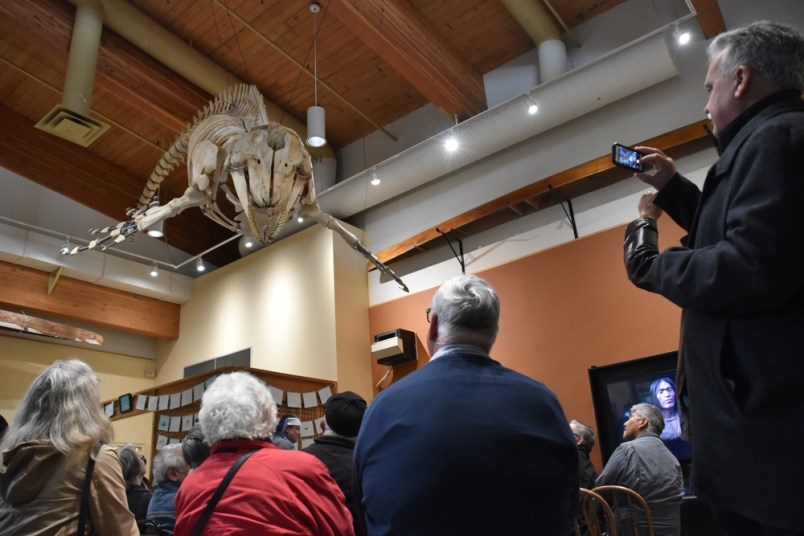The Department of Fisheries and Oceans has updated the necropsy result for the Southern Resident killer whale J34, known as DoubleStuf, which was found dead near Sechelt in December of 2016, giving final confirmation that the whale died of injuries suffered when it was hit by a ship.
The update was posted online July 22, after a request to release the final necropsy report was made by reporters with the CBC.
The update confirms what was already listed in the preliminary report made shortly after the whale’s carcass was brought ashore December 20, 2016 – that the18-year-old male was in relatively good health, but had “injuries consistent with blunt trauma to the dorsal side, and a hematoma indicating that it was alive at the time of injury and would have survived the initial trauma for a period of time prior to death.”
“The results of J34’s necropsy will feed into a growing body of knowledge to assist in assessing the threats to Southern Resident killer whales from a population health perspective,” the update said. “This data allows us to look at trends, pathogens, or other indicators that may affect their survival.”
The shíshalh Nation, whose members help recover the animal and aided in the initial necropsy, took custody of J34, which was given the shíshalh name Kwentens ?e te sinkwu [Guardian of the Sea].
The orca’s preserved skeleton is now on display at the tems swiya Museum as part of a permanent stalashen (Killer Whale) exhibit.
- with files from Sophie Woodrooffe.



